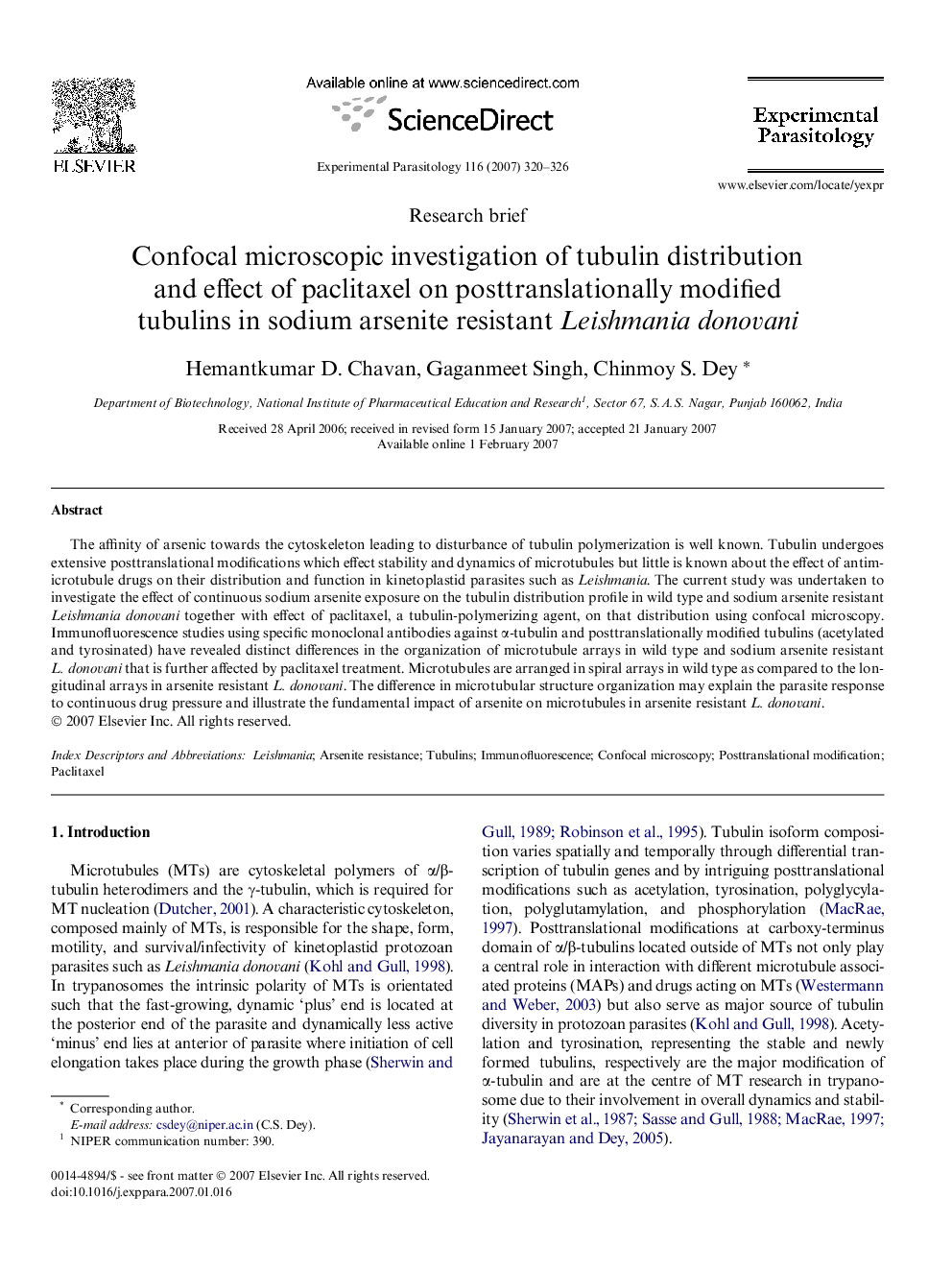| Article ID | Journal | Published Year | Pages | File Type |
|---|---|---|---|---|
| 4372187 | Experimental Parasitology | 2007 | 7 Pages |
The affinity of arsenic towards the cytoskeleton leading to disturbance of tubulin polymerization is well known. Tubulin undergoes extensive posttranslational modifications which effect stability and dynamics of microtubules but little is known about the effect of antimicrotubule drugs on their distribution and function in kinetoplastid parasites such as Leishmania. The current study was undertaken to investigate the effect of continuous sodium arsenite exposure on the tubulin distribution profile in wild type and sodium arsenite resistant Leishmania donovani together with effect of paclitaxel, a tubulin-polymerizing agent, on that distribution using confocal microscopy. Immunofluorescence studies using specific monoclonal antibodies against α-tubulin and posttranslationally modified tubulins (acetylated and tyrosinated) have revealed distinct differences in the organization of microtubule arrays in wild type and sodium arsenite resistant L. donovani that is further affected by paclitaxel treatment. Microtubules are arranged in spiral arrays in wild type as compared to the longitudinal arrays in arsenite resistant L. donovani. The difference in microtubular structure organization may explain the parasite response to continuous drug pressure and illustrate the fundamental impact of arsenite on microtubules in arsenite resistant L. donovani.
